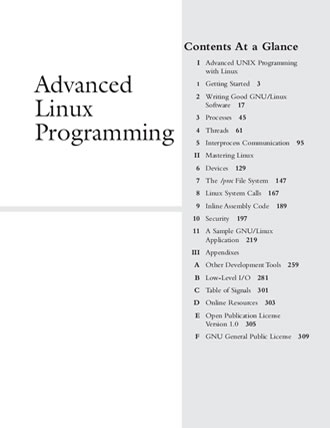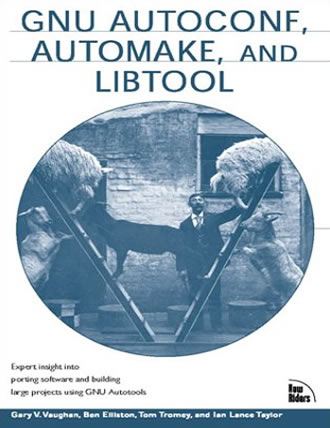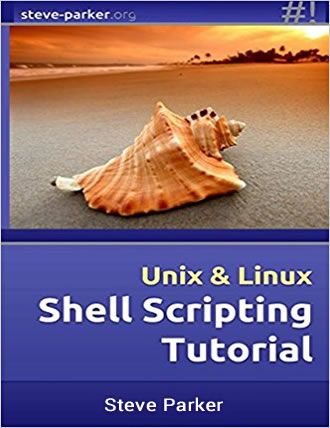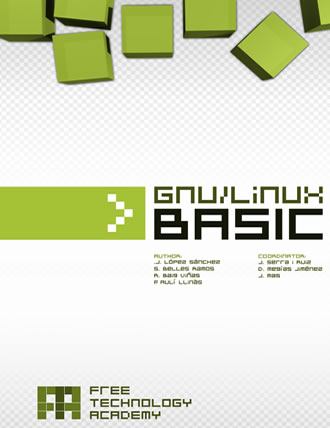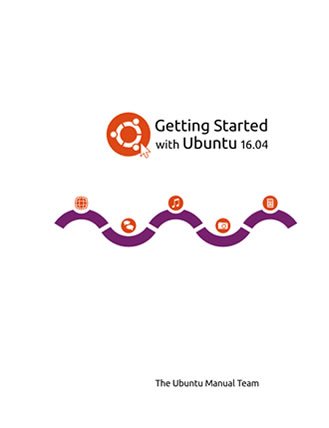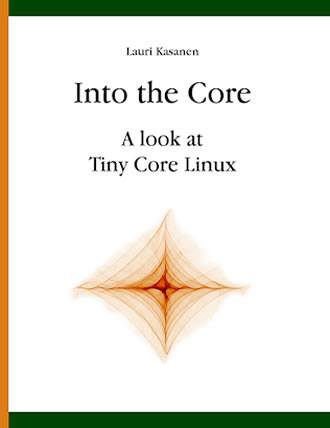Linux (lee’nuhks/ or /li’nuks/,_not_/li:’nuhks) is a free and open-source operating system first developed by Linus Torvalds (a then-student at the University of Helsinki) and friends that was first announced on August 25, 1991. Torvalds built Linux as a free and open source alternative to Minix, another Unix clone that was predominantly used in academic settings. He originally intended to name it “Freax,” but the administrator of the server Torvalds used to distribute the original code named his directory “Linux” after a combination of Torvalds’ first name and the word Unix, and the name stuck. The Linux kernel runs on numerous different platforms including the Intel and Alpha platform and is available under the GNU General Public License.
Linux is a Unix-like, open source and community-developed operating system for computers, servers, mainframes, mobile devices and embedded devices. The code used to create Linux is free and available to the public to view, edit, and—for users with the appropriate skills—to contribute to. It is supported on almost every major computer platform including x86, ARM and SPARC, making it one of the most widely supported operating systems. Learning Linux is like riding a bike, you can only become proficient by actually doing. So before getting started, make sure you have access to a terminal.
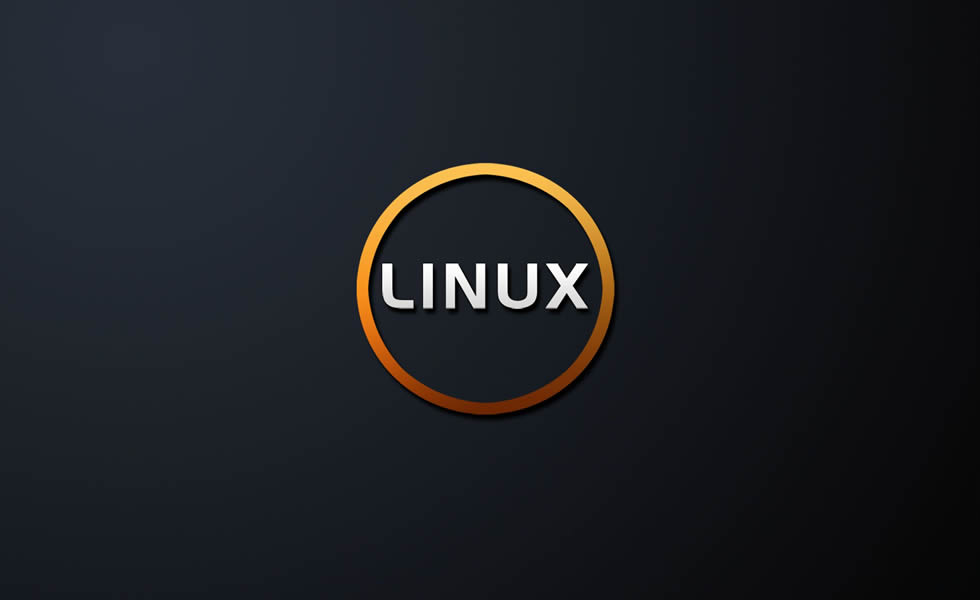
Linux is also considered
to be more secure than other operating systems.
Linux may be obtained in two different ways. All the necessary components can be downloaded free of charge from the Internet, which means an operating system can be assembled for almost nothing. An alternative is to use a so-called distribution, which is a Linux variation offered by many companies. They include a broad range of applications and full programs that significantly simplify the installation of Linux.
Linux is also considered to be more secure than other operating systems. However, it’s increasingly a target of attackers, as Linux systems are used for critical roles like developer workstations, web servers and internal file servers. In addition to being susceptible to Linux-based and cross-platform exploits, unprotected Linux machines can also become distribution points for Windows, Mac, and Android malware.
Linux is also different in that, although the core pieces of the Linux operating system are generally common, there are many distributions of Linux, which include different software options. This means that Linux is incredibly customizable. Linux users can also choose core components, such as which system displays graphics, and other user-interface components.
Linux distributions are also most commonly used as operating systems for supercomputers; in the decade since the Earth Simulator supercomputer, all the fastest supercomputers have used Linux. As of November 2016, 99.6% of the world’s 500 fastest supercomputers run some variant of Linux.
Related – Free Operating System Ebooks
“The Linux philosophy is ‘Laugh in the face of danger’. Oops. Wrong One. ‘Do it yourself’. Yes, that’s it.” – Linus Torvalds
As the title suggests, there’ll be a long list of free ebooks and resources below – 390 of them, sorted out in categories which you might find useful in your pursue of mastery in a non-Windows environment. You’ll find Linux, Unix, a general coverage of Operating System topics, Core Linux, Core Unix, Embedded Linux, FreeBSD, GUI X Windows, Security, Shell Programming, Unix & Linux Programming, Unix Networking, Unix System Administrators, Unix Text Editing, Regular Expressions and File Systems.
Granted, you may find that some of the resources below might be a tad too old, or probably a little outdated in today’s standard, but we think that knowledge is knowledge regardless and we hope you’ll benefit tremendously out of them. A big chunk of them are only available for online viewing, meaning that you need an Internet connection, but some of them do have downloadable options as PDF documents.
Free Linux Ebooks
- A Byte of VIM by Freeware (PDF)
- A Slackware Desktop Enhancement Guide by Darrell Anderson
- Advanced Linux Programming by Mark L. Mitchell, Alex Samuel, Jeffrey Oldham
- Agustin’s Linux Manuals by Agustin Velasco
- An Introduction to Display Editing with Vi by William Joy, Mark Horton (PDF)
- An Introduction to Tkinter by Fredrik Lundh
- Bash Shell Scripting Tutorial by Steve Bourne
- Basic Graphics Programming With The Xlib Library by Actcom
- Beyond Linux from Scratch by Mark Hymers
- Bodhi Linux 3 for Beginners by Roger Carter
- Brian and Tom’s Linux Book by Brian P. Bilbrey and Tom Syroid.
- Debian GNU/Linux Desktop Survival Guide by Graham Williams
- Debian GNU/Linux System Administrator’s Manual by Ardo van Rangelrooij, Tapio Lehtonen and Oliver Elphick.
- Desktop Linux by Wikipedia
- Easy Shell Scripting by Blessen Cherian
- Embedded Software Development with eCos by Anthony J. Massa
- Fedora 10 Installation Guide by Red Hat, Inc.
- Free for All by Peter Wayner
- Gawk: Effective AWK Programming by Arnold Robbins
- Getting Started With Ubuntu by The Ubuntu Manual Team
- Getting started with WebSphere Application Server by Jiang Lin Quan, at al.
- GNU Autoconf, Automake, and Libtool by Gary V. Vaughan, Ben Elliston, Tom Tromey and Ian Lance Taylor
- GNU Emacs Manual by Richard M. Stallman
- GNU/Linux Basic by J.L. Sanchez-Montanes, S.B. Ramos, R.B. Vinas, F.A. Llinas (PDF)
- GNU/Linux Command-Line Tools Summary by Gareth Anderson
- GNU/Linux Desktop Survival Guide by Graham Williams
- GTK+ / Gnome Application Development by Havoc Pennington (PDF)
- Guide to ARMLinux for Developers
- Guide to IP Layer Network Administration with Linux by Martin A. Brown
- Guide to Managing Media and Public Relations in the Linux Community by Sheldon Rose
- Into the Core: A look at Tiny Core Linux by Lauri Kasanen
- Introduction to Linux by Brandon Chisham (PDF)
- Introduction to Linux: A Hands on Guide by Machtelt Garrels (PDF)
- Introduction To Linux: A Hands On Guide For Beginners by Machtelt Garrels (HTML)
- Is Parallel Programming Hard, And, If So, What Can You Do About It? by Paul E. McKenney
- Java Application Development on Linux by Carl Albing, Michael Schwarz
- KDE 2.0 Development by David Sweet
- Knowing Knoppix
- Learning Debian GNU/Linux by Bill McCarty
- Learning Old School Linux by Ed Hartnett
- Learning the Korn Shell by Bill Rosenblatt and Arnold Robbins (PDF)
- Learning the vi Editor by Linda Lamb and Arnold Robbins (PDF)
- Life with Qmail by Dave Sill
- Linkers and Loaders by Morgan-Kaufman (PDF)
- Linux 101 Examination by Leading Edge Business Solutions (PDF)
- Linux 101 Hacks by Ramesh Natarajan
- Linux 102 Examination by Leading Edge Business Solutions (PDF)
- Linux Administration Made Easy by Steve Frampton
- Linux Administrator’s Security Guide by Kurt Seifried
- Linux Advanced Routing and Traffic Control by Bert Hubert, at al.
- Linux Application Development Using Websphere Studio 5 by Osamu Takagiwa, at al. (PDF)
- Linux Client Migration Cookbook by IBM.Com/Redbooks (PDF)
- Linux Compute Clusters
- Linux Device Drivers by Jonathan Corbet, Alessandro Rubini, and Greg Kroah-Hartman
- Linux Device Drivers, 3rd Edition by J. Corbet, A. Rubini, G. Kroah-Hartman
- Linux Dictionary by Binh Nguyen (PDF)
- Linux Filesystem Hierarchy by Binh Nguyen (PDF)
- Linux For Newbies by Various authors.
- Linux From Scratch by Gerard Beekmans
- Linux Gazette by Ben Okopnik
- Linux Guide by Joshua Go
- Linux in a Windows World by Roderick W. Smith
- Linux in the Workplace by SSC
- Linux Inside by 0xAX
- Linux Installation and Getting Started by Matt Welsh, at al.
- Linux Internals by Simone Demblon, Sebastian Spitzner (PDF)
- Linux IPv6 HOWTO by Peter Bieringer
- Linux Kernel Crash Book by Igor Ljubuncic
- Linux Kernel in a Nutshell by Greg Kroah-Hartman
- Linux Kernel in a Nutshell by Greg Kroah-Hartman
- Linux Know-How by Epina GMBH
- Linux Network Administrator’s Guide by Olaf Kirch & Terry Dawson
- Linux Network Administrator’s Guide, 2nd Edition by Olaf Kirch & Terry Dawson
- Linux Network HowTo by Neil Gunton
- Linux Newbie Administrator Guide by Stan, Peter and Marie Klimas (PDF)
- Linux Packet Filtering and IPtables by Oskar Andreasson
- Linux Parallel Processing HOWTO by Hank Dietz (PDF)
- Linux Patch Management by Michael Jang (PDF)
- Linux Patch Management: Keeping Linux Systems Up To Date by Michael Jang (PDF)
- Linux Professional Institute (LPI) Exam Prep by IBM
- Linux Quick Fix Notebook by Peter Harrison (PDF)
- Linux Quick Fix Notebook by Peter Harrison (PDF)
- Linux Security Administrator’s Guide by Dave Wreski
- Linux Security for Beginners by Linuxtopia
- Linux Security HOWTO by K. Fenzi, D. Wreski
- Linux Shell Scripting A Beginner’s handbook by Vivek G. Gite
- Linux Sound by Jan Newmarch
- Linux System Administration by Matthew West
- Linux Systems Programming by Jonathan Macey
- LINUX: Rute User’s Tutorial and Exposition by Paul Sheer (PDF)
- Managing Linux Systems with Webmin by Jamie Cameron (PDF)
- Managing Linux Systems with Webmin by Jamie Cameron (PDF)
- Managing Projects with GNU Make, 3rd Edition by Robert Mecklenburg
- Maximum RPM by Edward C. Bailey
- Official Ubuntu Documentation by Ubuntu
- OPEN LOOK User’s Guide by Ian Darwin, Valerie Quercia and Tim O’Reilly
- OpenSUSE Desktop Essentials by Neil Smyth
- Pocket Linux Guide by David Horton
- Programming From The Ground Up by Jonathan Bartlett
- Programming Guide for Linux USB Device Drivers by Detlef Fliegl
- Programming Linux Games by John R. Hall (PDF)
- Puppy Linux by Wikibooks
- Red Hat Linux 7 Unleashed by William Ball
- Red Hat Linux Unleashed by Kamran Husain and Tim Parker (PDF)
- Running Linux by Matt Welsh, Matthias Kalle Dalheimer, Terry Dawson, Lar Kaufman
- Running Linux by Matt Welsh, Matthias Kalle Dalheimer, and Lar Kaufman (PDF)
- Samba-3 by Example by John H. Terpstra (PDF)
- Securing & Optimizing Linux: The Ultimate Solution by Gerhard Mourani (PDF)
- Securing and Hardening Red Hat Linux Production Systems by Werner Puschitz
- Securing and Optimizing Linux: The Ultimate Solution by Gerhard Mourani (PDF)
- Self-Service Linux: Mastering the Art of Problem Determination by Mark Wilding and Dan Behman (PDF)
- Self-Service Linux: Mastering the Art of Problem Determination by Mark Wilding, Dan Behman (PDF)
- Sidux: Unofficial User Guide by Pawel
- Slackware Linux Essentails, 2nd Edition by D. Cantrell, L. Johnson, A. Hicks, C. Lumens
- Slackware Linux Unleashed by Kamran Husain
- Step by Step Linux Guide by M. B. G. Suranga De Silva
- Step-by-Step Guide to Bodhi Linux by Roger Carter
- Step-by-Step Linux Guide by M. B. G. Suranga De Silva (PDF)
- SUSE Linux Administration Guide by Frank Bodammer, Stefan Dirsch, et al.
- Test Driving Linux by David Brickner
- The Big Online Book of Linux Ada Programming by Ken O. Burtch
- The CTDP Linux User’s Guide by Mark Allen
- The Debian Administrator’s Handbook by Raphaël Hertzog and Roland Mas.
- The Easiest Linux Guide You’ll Ever Read by Scott Morris
- The Linux Command Line by William E. Shotts, Jr.
- The Linux Cookbook: Tips and Techniques for Everyday Use by Michael Stutz
- The Linux Development Platform – Configuring, Using, and Maintaining a Complete Programming Environment by Rafeeq Ur Rehman, Christopher Paul (PDF)
- The Linux Gamers’ HOWTO by Peter Jay Salzman, Frederic Delanoy
- The Linux Kernel by Andries Brouwer
- The Linux Kernel Module Programming Guide by Peter Jay Salzman, Michael Burian, Ori Pomerantz (HTML)
- The Linux Kernel Module Programming Guide by Peter Jay Salzman (PDF)
- The Linux Programmer’s Guide by Sven Goldt, at al.
- The Linux Starter Pack by Linux Format Magazine
- The Linux System Administrator’s Guide by Lars Wirzenius, at al.
- The Linux Wireless LAN Howto by Jean Tourrilhes
- The Little Book of Semaphores by Allen B. Downey
- The LPIC-2 Exam Prep by Wim-Jan Hilgenbos, Alain van Hoof, Heinrich W. Klöpping, Beno T.J. Mesman, Piet W. Plomp, Willem A. Schreuder
- The Official Samba-3 HOWTO and Reference Guide by John H. Terpstra, Jelmer R. Vernooij
- The Operating Systems Handbook by Bob DuCharme
- The Ultimate Linux Newbie Guide by Alistair Ross
- Ubuntu – An Absolute Beginner’s Guide by Courtney Loo
- Ubuntu 8.10 (Intrepid Ibex) by Chua Wen Kiat
- Ubuntu Apps: Application Directory, Tips, and Customization Guide by Kevin Prag
- Ubuntu Hacks by Jonathan Oxer
- Ubuntu Pocket Guide and Reference by Keir Thomas
- Ubuntu Server Succinctly by José Roberto Olivas Mendoza
- Understanding the Linux Virtual Memory Manager by Mel Gorman
- Understanding the Linux Virtual Memory Manager by Mel Gorman
- User Mode Linux by Jeff Dike
- Using Samba by R. Eckstein, D. Collier-Brown, P. Kelly
- Wireless LAN Resources For Linux by HP
- X Window Programming by Wikibooks
- X WINDOWS by Dr A D Marshall
- XView Reference Manual by Thomas Van Raalte
- Back to Table of Contents
Unix
- A Quick Introduction to Unix by Jim Tyson, et al.
- Advanced Bash-Scripting Guide by Mendel Cooper
- AIX Reference for Sun Solaris Administrators by IBM Redbooks
- An Awk Primer by Aurelio A. Heckert
- ANSI C for Programmers on UNIX Systems by Tim Love
- Bash Guide for Beginners by Machtelt Garrels
- Beej’s Guide to Unix Interprocess Communication by Brian “Beej Jorgensen” Hall
- Bourne Shell Scripting by Wikibooks
- Conquering the Command Line by Mark Bates
- Debugging C and C++ code in a Unix Environment by J.H.M. Dassen (Ray) and I.G. Sprinkhuizen-Kuyper
- Effective AWK Programming by Arnold D. Robbins
- Errors: errno in UNIX programs by Chris Herborth
- Filesystem Hierarchy Standard by R. Russell, D. Quinlan, C. Yeoh
- GNU Bash Reference Manual by Chet Ramey, Brian Fox
- Guide to Unix by Wikibooks
- Guide to X11 by Steve Ambler, et al.
- Introduction to Unix by F.G. Fiamingo, L. DeBula, L. Condron
- Learning About UNIX-GNU/Linux
- Learning the Unix Operating System by Jerry Peek, Grace Todino, and John Strang
- Learning the vi editor by Wikibooks
- Mac OS X for Unix Geeks by Brian Jepson and Ernest E. Rothman
- MH and xmh: Email for Users and Programmers by Jerry Peek
- Motif Programming by Dave Marshall
- Motif Programming Manual by Dan Heller, Paula Ferguson, David Brennan
- Network Programming Under Unix Systems by Actcom
- Porting UNIX Software by Greg Lehey
- Programming from the Ground Up by GNU
- Secure Programming for Linux and Unix HOWTO by David A. Wheeler
- The Art of UNIX Programming by Eric S. Raymond
- The Book of Webmin by Joe Cooper
- The Craft of Text Editing by Craig A. Finseth
- The Daemon, the Gnu, and the Penguin by Peter H. Salus
- The Unix Programming Environment by Mark Burgess
- The UNIX-HATERS Handbook by Simson Garfinkel, Daniel Weise, Steven Strassmann
- The UNIX-Haters Handbook by Simson Garfinkel, Daniel Weise, Steven Strassmann
- UNIX – Filesystem Hierarchy Standard by Rusty Russell, Daniel Quinlan, and Christopher Yeoh
- Unix in a Nutshell by Arnold Robbins
- Unix KornShell Quick Reference by Freeware
- Unix System Administration by Frank G. Fiamingo
- UNIX System Security: A Guide for Users and System Administrators by David A. Curry
- UNIX Systems Programming for SVR4 by David A. Curry
- UNIX Text Processing by Dale Dougherty, Tim O’Reilly
- Writing GNOME Applications by John R. Sheets
- Back to Table of Contents
Operating Systems
- A History of Apple’s Operating Systems by Amit Singh
- A Neutral Look at Operating Systems by Wikibooks
- A Short Introduction to Operating Systems by Mark Burgess (PDF)
- An Operating Systems Vade Mecum, Second Edition by Raphael A. Finkel (PDF)
- Baking Pi: Operating Systems Development by Alex Chadwick
- How to Make a Computer Operating System in C++ by Samy Pesse
- Implementing CIFS: The Common Internet File System by Christopher Hertel (PDF (Zipped))
- Lecture Notes of Operating Systems by Fikret Ercal
- Lecture Notes on Operating Systems by Marvin Solomon
- Lecture Notes On Operating Systems by Jelena Mamcenko (76 pages)
- MMURTL V1.0 by Richard A. Burgess
- Operating System by NA
- Operating System by NPTEL by NPTEL
- Operating System Concepts by Abraham Silberschatz, Peter Baer Galvin and Greg Gagne (90 pages)
- Operating Systems and Middleware: Supporting Controlled Interaction by Max Hailperin
- Operating Systems and Systems Administration by Mr Nigel Gunton
- Operating Systems Course Notes by Dr. John T. Bell
- Operating Systems Lecture Notes by Barton Miller, University of Wisconsin-Madison
- Operating Systems Lecture Notes by Martin C. Rinard (Lecture Notes)
- Operating Systems Lecture Notes Raahid Bin Muhammed by Raahid Bin Muhammed
- Operating Systems Study Guide by Tim Bower
- Operating Systems: Three Easy Pieces by Remzi H. Arpaci-Dusseau, Andrea C. Arpaci-Dusseau (HTML)
- Practical File System Design with the Be File Sysytem by Dominic Giampaolo (247 pages)
- Principles of Operating Systems by Donald Bren School of Information and Computer Sciences, University of California, Irvine
- Programming the Be Operating System by Dan Parks Sydow
- The Little Book of Semaphores, 2nd edition by Allen B. Downey
- The Mac Manual by Jackson Chung
- The Operating Systems Handbook: Unix, Openvms, Os/400, Vm, and MVS by Bob DuCharme
- Think OS: A Brief Introduction to Operating Systems by Allen B. Downey
- Back to Table of Contents
Core Linux
- Linux Client Migration Cookbook: A Practical Planning and Implementation Guide for Migrating to Desktop Linux by IBM (PDF)
- Linux Installation and Getting Started by Matt Welsh
- Josh’s Linux Guide
- Maximum RPM by RedHat
- Maximum RPM by Edward C. Bailey
- Linux Dictionary by Binh Nguyen
- Brian and Tom’s Linux Book by Brian, Tom
- Beyond Linux From Scratch by The BLFS Development Team
- Linux From Scratch by Gerard Beekmans
- Linux Professional Institute Certification (LPIC) Level 2 Examination Preparation by Wim Jan Hilgenbos
- Linux Compute Clusters by Linux Clusters
- The Linux Cookbook Tips and Techniques for Everyday Use by Michael Stutz
- Introduction to Linux A Hands on Guide by Machtelt Garrels (Mirror)
- O’Reillyreg; Unix/Linux Books Chapters
- Linux Quick Fix Notebook by Peter Harrison
- GNU / Linux Command Line Tools Summary by Gareth Anderson
- Ubuntu Starter / FAQ Guide
- Using Samba 1st Edition
- Pocket Linux Guide by David Horton
- Linux Shortcuts and Commands by Stan / Peter Klimas
- Slackware Linux Essentials by Alan Hicks
- Back to Table of Contents
Core Unix
- Introduction to Unix for Web Developers by Extropia
- Beginners Guide to Programming on the SUNs
- The Unix Programming Environment by M. Burgess
- The Unix Haters Handbook (PDF)
- O’Reilly Unix/Linux Books Chapters
- O’Reilly The UNIX CD Bookshelf
- O’Reilly The UNIX CD Bookshelf v2.x
- Frequently Asked Questions about UNiX
- UNIX Tutorial
- Introduction to UNIX
- Unix Lecture Notes
- Back to Table of Contents
Embedded Linux
- Embedded Systems by Kiran Divekar (PDF)
- Survey of Filesystems for Embedded Linux by Gene Sally (PDF)
- Back to Table of Contents
FreeBSD
- A Comprehensive Guide to FreeBSD by VMUNIX
- BSD vs Linux by Freeware
- FreeBSD Developers Handbook
- FreeBSD Handbook by Murray Stokely, Nik Clayton
- FreeBSD Man Pages
- FreeBSD Porter’s Handbook by The FreeBSD Documentation Project
- FreeBSD System Programming by Nathan Boeger / Mana Tominaga
- FreeBSD System Programming by Silberschat
- Frequently Asked Questions for FreeBSD 6.X and 7.X by The FreeBSD Documentation Project
- The Complete FreeBSD by Greg Lehey
- The Complete FreeBSD: Documentation from the Source by Greg Lehey
- The Design and Implementation of the 4.4 BSD Operating System by Marshall Kirk McKusick, Keith Bostic, Michael J. Karels, John S. Quarterman
- The Design and Implementation of the 4.4BSD Operating System by M.K. McKusick, K. Bostic, M.J. Karels, J.S. Quarterman
- The Linux+FreeBSD mini HOWTO by Niels Kristian, Bech Jensen
- Back to Table of Contents
GUI X Windows
- XView Programming Manual (7A) 3rd Edition and XView Reference Manual (7B) by Dan Heller
- Motif Programming Manual (6A) / Motif Reference Manual (6B), 2nd Ed Mirror by Antony Fountain, Jeremy Huxtable, Paula Ferguson & Dan Heller
- Motif Programming Manual (6A) / Motif Reference Manual (6B), 2nd Ed by Dan Heller, Paula Ferguson and David Brennan
- AIXwindows Programming by International Business Machines Corporation
- Motif Programming by A. D. Marshall
- Xlib programming a short tutorial by Christophe Tronche
- Xlib Programming Manual by Dirk Vermeir
- X Window and Motif Programming Guide by D. Marshall
- X Window System Architecture Overview by D. Manrique
- Wine How To
- Cygwin Users Guide by Red Hat, Inc
- GTK+ Reference Manual by Freeware
- XView Programming and Reference by Dan Heller
- XEmacs Tutorial
- Back to Table of Contents
Security
- Guide to Writing SE Linux Policy by Faye Coker
- Getting Started with SELinux by Faye Coker
- Secure Programming for Linux and Unix by D.A. Wheeler (HTML)
- Securing Linux Production Systems by W. Puschitz
- Linux Security Administrators Guide by Dave Wreski
- Securing Debian Linux by J.F. Pea
- Linux Firewall Configuration Packet Filtering and Netfilter / Iptables by O. Andreasson
- Linux Security for Beginners by Neil A. Smyth
- Linux Security HOWTO by K. Fenzi, D. Wreski
- Practical UNIX Internet Security by S. Garfinkel, G. Spafford
- Practical UNIX Internet Security by S. Garfinkel, G. Spafford
- Linux Administrators Security Guide
- Securing Debian Manual
- Secure Programming for Linux and Unix HOWTO (PDF)
- Network Security Tools
- Back to Table of Contents
Shell Programming
- Advanced Bash Scripting Guide by Mendel Cooper (PDF)
- Advanced Bash Scripting Guide by Mendel Cooper (HTML)
- UNIX/Linux Bourne / Bash Shell Scripting Tutorial
- Bash Reference Manual
- Bash Reference Manual (Mirror)
- Bash Guide for Beginners by Machtelt Garrels (PDF)
- Bash Guide for Beginners by Machtelt Garrels (HTML)
- Sed An Introduction
- Programming the Unix/Linux Shell by C. Cantin
- C shell Cookbook
- O’Reilly Learning the Korn Shell
- Back to Table of Contents
Unix & Linux Programming
- GNU Autoconf, Automake, and Libtool by Gary V. Vaughan, Ben Elliston, Tom Tromey and Ian Lance Taylor
- An Introduction to GCC for the GNU Compilers GCC and G++ by Brian Gough
- Learning GNU C by C. ORiordan (Mirror)
- Learning GNU C by C. ORiordan
- FreeBSD System Programming by N. Boeger, M. Tominaga
- Beginners Guide to Programming on the SUNs by College of Engineering Bucknell University
- Beejs Guide to Interprocess Communication
- Programming in C UNIX System Calls and Subroutines Using C by A. D. Marshall
- The Unix Programming Environment by M. Burgess
- Secure Programming for Linux and Unix by David A. Wheeler
- Debugging C and C++ Code in a Unix Environment by J.H.M. Dassen and I.G. Sprinkhuizen-Kuyper
- Java Application Development on Linux by Carl Albing / Michael Schwarz
- The Art of Unix Programming by Eric S. Raymond
- Back to Table of Contents
Unix Networking
- Samba 3 by Example Practical Exercises to Successful Deployment by John H. Terpstra (PDF)
- The Official Samba 3 HOWTO and Reference Guide by John H. Terpstra/Jelmer R. Vernooij
- Using Samba, 1st Edition by R. Eckstein
- Guide to IP Layer Network Administration with Linux by Martin A. Brown
- The Linux Wireless LAN Howto
- Introduction to Socket Programming Mirror
- UNIX Socket FAQ
- Linux Firewall Configuration Packet Filtering and Netfilter / Iptables by O. Andreasson
- SCO Unix Networking Guide
- Linux IPv6 HOWTO by P. Bieringer
- Linux Advanced Routing Traffic Control HOWTO by Bert Hubert
- UNIX Network Programming with TCP/IP by Alan Dix
- Beej’s Guide to Unix Network Programming by Freeware
- O’Reilly Networking CD Bookshelf, Version 1.0 (Mirror)
- O’Reilly Networking CD Bookshelf, Version 1.0
- O’Reilly Networking CD Bookshelf, Version 2.0
- O’Reillyr Linux Network Administrators Guide, 2nd Edition by O. Kirch T. Dawson
- Back to Table of Contents
Unix System Administrators
- UNIX Like Filesystem Hierarchy Standard
- Unix System Administration – A Survival Course
- System and Network Administration
- Back to Table of Contents
Unix Text Editing
- Sed An Introduction by Bruce Barnett
- VIM Color Editor HOW TO by A. Vasudevan
- Vim FAQ by Peppe, Benji, Charles Campbell
- Vim Cookbook by S. Oualline
- VIM Quick Reference Card
- The VIM (Vi Improved) Book (PDF, 572 pages)
- Unix Text Processing by Dale Dougherty, Tim O’Reilly (PDF, PBM)
- A Tutorial Introduction to GNU Emacs by Chicago State University
- GNU Emacs Manual by GNU
- XEmacs Tutorial by Ohio State University Press
- Back to Table of Contents
Regular Expressions
- Regular Expression Tutorial by Jan Goyvaerts
- Regular Expression HOWTO by A.M. Kuchling
- Regular Expressions by Bruce Barnett
- Regular Expressions Cheat Sheet by Freeware
- Regexp Syntax Summary by Freeware
- Back to Table of Contents
Filesystem Specification
- Accessing MS DOS Filesystems (from FreeBSD)
- Understanding Unix Filesystems
- Understanding FreeBSD Disklabels
- Understanding Filesystem Inodes
- XFS for Linux
- An In Depth Look at Reiserfs
- Mounting Other Filesystems (from FreeBSD)
- Linux EXT2FS Undeletion Mini Howto
- Porting XFS to Linux
- LinLogFS A Log Structured Filesystem For Linux (formely known as DTFS)
- Large File Support in Linux
- Large Disk Howto
- Linux Kernel Procfs Guide
- Linux Filesystems
- Linux Filesystem Hierarchy
- BeOS Filesystem for Linux
- Fsck The UNIX File System Check Program
- FreeBSD Directory Structure
- EXT3, Journaling Filesystem
- Ext2 Installable File System (IFS) for Windows
- Ext2Fsd opensource Ext2 file system driver for WinNT/Win2K/WinXP
- EXT2FS Homepage
- Filesystems Howto
- Filesystem Performance on FreeBSD
- Filesystem Performance and Scalability in Linux 2.4.17
- Back to Table of Contents

Learning Linux is like riding a bike,
you can only become proficient by actually doing. So before getting started, make sure you have access to a terminal.
Related – Free Computers & Technology Ebooks
We’re pretty sure the common use of Windows as an operating system in our daily computer chores warrants a change of environment, or simply an opportunity for adventurous souls to try out an alternative such as Linux. With the huge variety of Linux distributions out there, you’ll be spoilt for choices, but just spend some time to choose one based on your needs and requirements. Some might not stray too far from a Windows look-a-like GUI, and some just bring you back to the old MS-DOS days where typing is everything.
You may want to explore more free ebooks closely related to this topic, which you can find through the links below:-
Interested in videos created exclusively for bookworms?
Watch videos about books, reading and writing. Expect weird, amazing, never known before facts and many more.

